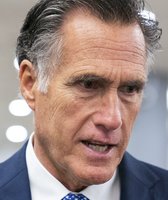Get PolitiFact in your inbox.
Says “$30 million gap” in stadium funding forced the Portland Beavers to leave
To hear Mayor Sam Adams explain it, the Portland Beavers this month played their last game in Portland because city leaders couldn’t plug a "$30 million gap" toward the cost of building a new stadium for the minor league baseball team.
Adams repeated that "$30 million gap" claim, or cited finances, eight times during a heated 15-minute radio exchange with The Oregonian’s sports columnist John Canzano on Sept. 7, 2010. Adams said city leaders did everything they could to keep the Portland Beavers in town, but a lack of money, not political effort, caused the team’s pending departure.
"Well, some of us have to exist in the real world of finance," Adams told Canzano. "And the fact of the matter is, is that baseball, the Beavers, great, great tradition. That’s why I’m absolutely interested in keeping them in the city of Portland. That’s why we looked at 20 sites. That’s why we spent 18 months, almost two years doing that. But the fact of the matter is, there’s a $30 million gap. And there’s no amount of rhetoric on your part that’s going to make up for that gap."
We decided to dust off Adams’ year-old funding proposals for the Portland Beavers. And the fact of the matter is, the gap never did reach $30 million, although it came close. But Adams’ financial assertion glossed over the more significant political pressures that dogged proposals for a baseball stadium at the Rose Quarter or Lents Park.
It was those political pressures -- not money -- that derailed plans to build at the two most-viable sites.
First, a review of the numbers:
The Portland City Council voted 3-2 in March 2009 to support a preliminary deal to turn PGE Park into a soccer-specific facility for the Portland Timbers and to build a new stadium for the Beavers in the Rose Quarter.
The proposal outlined estimated costs and funding sources. There was, in fact, a sizable gap: $26.8 million that city leaders and Merritt Paulson, the Beavers and Timbers owner, had to fill. Roy Kaufmann, Adams’ spokesman, said the mayor rounded up when citing the $30 million gap. We’ll give him that.
The city later floated a plan to build a baseball stadium at Lents Park. That proposal also included estimated costs and funding sources, much of it largely tied to a controversial plan to dip into urban renewal money. That proposal included a $9 million funding gap, and Paulson -- not the city -- was required to find the missing money. In this case, Adams’ "$30 million gap" is significantly inflated.
As for the politics:
The Rose Quarter proposal fell apart amid public push-back over tearing down Memorial Coliseum to make way for a baseball stadium. The City Council was scheduled to vote on the issue in April 2009, but Adams postponed action twice amid criticism from the architecture community, which wanted to preserve the glass-framed building. Adams in May 2009 announced Memorial Coliseum would be spared.
City officials and Paulson then focused attention on Lents Park in Southeast Portland. Vocal Lents residents who disliked the proposal booed Paulson during a hostile June 2009 meeting. The next day, Paulson withdrew his proposal citing "a lack of community support."
Fast-forward to September 2010, when the Portland Beavers played their final game in PGE Park. Paulson is expected to sell the baseball team, and new ownership will likely move it to California.
Kaufmann said Adams would have addressed the location and political challenges -- and not kept repeating the "$30 million gap" claim -- had Adams and Canzano had a reasoned discussion instead of their rancorous back-and-forth.
So here’s the umpire’s call: Adams is correct in citing a funding gap, but he overstated it by between $3.2 million and $21 million, depending on the location -- Memorial Coliseum or Lents Park. Adams at the same time largely ignored the political challenges that ultimately killed both proposals. This historical revisionism makes Adams look like a fiscal steward, when in fact Adams and City Commissioner Randy Leonard were working most closely with Paulson to broker deals that the public wouldn’t endorse.
We rate Adams’ statement Half True.
Featured Fact-check
Our Sources
The Oregonian, Audio: John Canzano, Portland Mayor Sam Adams debate who's to blame in death of Beavers baseball, September 7, 2010
City of Portland, "Proposed MLS/AAA Transaction Terms for City Council Consideration,"March 9, 2009
Sam Adams, "Outline of process for siting AAA-baseball in Lents Park," June 16, 2009
Merritt Paulson, "Dear Mayor Adams and Commissioners letter," June 19, 2009
Browse the Truth-O-Meter
More by Brad Schmidt
Says “$30 million gap” in stadium funding forced the Portland Beavers to leave
Support independent fact-checking.
Become a member!
In a world of wild talk and fake news, help us stand up for the facts.























